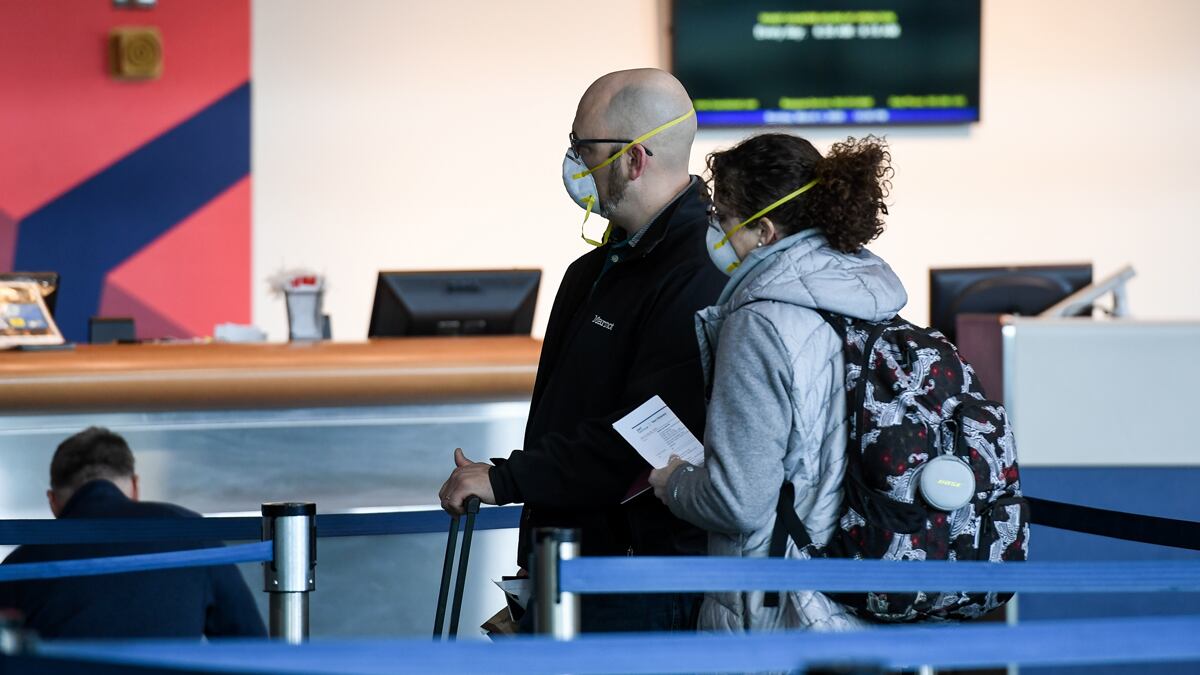Oregon has coronavirus. What everyone wants to know now is: How bad is it?
On Feb. 28, Gov. Kate Brown announced Oregon health officials had detected the state's first case of COVID-19 coronavirus. Within hours, Portland-area residents stocked up on canned soup and paper towels.
The panic was the result of widespread confusion about what the novel coronavirus is, how quickly it spreads, and how many people are infected. But citizens still have questions even leading health experts don't have answers to. Here's a list of what we know so far, and what we don't.
Known knowns:
3: The number of COVID-19 cases diagnosed so far in the state of Oregon. The first is a Washington County resident who is an employee of Forest Hill Elementary School in Lake Oswego. Two more positive cases have been announced: one March 1 in Washington County, and another March 2 in Umatilla County—more than 250 miles away from the first two cases. That distance matters because it suggests the illness is spreading widely.
5: The limit Fred Meyer has placed on sanitation, cold and flu products Portland-area customers may order on the grocery chain's website for pickup or delivery.
1,500: The number of coronavirus test kits the state has received from the U.S. Centers for Disease Control and Prevention. However, the state's lab is capable of testing only 80 of those kits per day, meaning health officials need to be selective about whom they administer tests to—the elderly and those with weakened immune systems, the two groups most likely to develop life-threatening symptoms should they acquire the virus.
582: That's the number of intensive care beds in Portland-area hospitals, which account for the majority of 1,059 intensive care beds in the state. According to the CDC, as many as one-third of hospitalized coronavirus patients have required intensive care.
$100 million: That's how much a bipartisan group of Washington state lawmakers asked for March 2 to fight coronavirus. Oregon lawmakers? Because of the GOP walkout, they can do nothing. "Legislators are actively monitoring the situation," says Danny Moran, a spokesman for House Speaker Tina Kotek (D-Portland). "Of course, if any legislative action is needed, it will require a quorum."
Known unknowns:
The total number of coronavirus cases in the state of Oregon. While state health officials have announced three confirmed cases of COVID-19, it is nearly impossible to know the number of individuals who have contracted the virus. Dr. Jennifer Vines, the tri-county public health officer, said during a press conference Friday that "the case count may very well tick up" as more people are tested for the virus.
The day coronavirus first became active in the state. The first confirmed case was announced Feb. 28. But it's likely the virus could have spread through the community for weeks before the first positive test turned up. That might be really bad news—or it might mean lots of people just thought they had the flu because their symptoms weren't very serious.
How deadly the virus actually is. A study published in The Journal of the American Medical Association determined that coronavirus has a 2.3 percent mortality rate—significantly higher than the seasonal flu. But now, considering that many may have been infected who didn't know it or who experienced mild symptoms, experts are starting to think that rate could be much lower.
How long the outbreak will last and how many people will be affected. These unknowns are arguably the most daunting. It is impossible to say how deadly the virus will be or how long the outbreak will last, state health officials say. "The vast majority of people infected with COVID-19 will have a mild disease," said Dr. Dean Sidelinger of the Oregon Health Authority.
